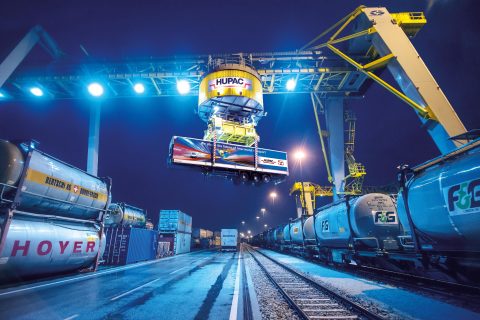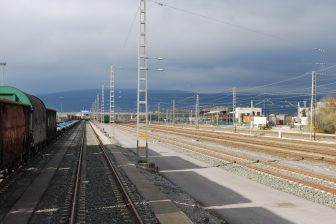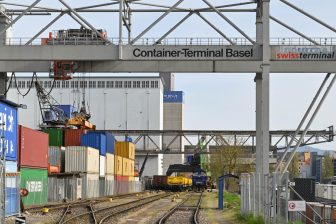
Hupac goes Eurasian after strong response to Rastatt
The now-infamous Rastatt shutdown failed to stop Swiss intermodal operator Hupac increasing its rail shipments by over three per cent in 2017. This rail success is also set to be strengthened with a new Eurasian intermodal partnership
it carried around 763,000 road consignments by rail, a rise of 3.5 per cent on the previous year. The seven-week blockade of the strategic rail freight route in Germany’s Rhine Valley resulted in the loss of over 30,000 transports.
Fall-out
But the fall-out from the incident in August did cause Hupac some severe problems. Less than a third of the usual 300 trains operating on the route could be re-routed elsewhere. But by providing extra trains between Basel and Italy, and by circumventing the accident site with waterways transports on the Rhine and truck shuttles, Hupac accommodated around half of the transports.
The company is also this month expanding its Eurasian rail links. Hupac Intermodal and Ady Container are joining forces to connect networks between Europe and Iran, Azerbaijan, Turkmenistan and Kazakhsta. Routing will be via a new intermodal hub in Baku.
Transalpine
While reopening of the Rhine Valley route in October quickly led to a resumption of normality, Hupac said the Rastatt ‘effect’ had been noticeable not only in the statistics of transalpine transports through Switzerland, but also the country’s non-Alpine import/export route via the Benelux-Switzerland option. Transalpine movements via France increased by 13 per cent, but fell by 2.2 per cent through Austria.
The company said it expects the ‘active demand’ for its services to continue this year, helped by several schemes in the pipeline. These include terminal projects in Milan Smistamento, Piacenza and Brescia, and several new train connections, including the launch this month of a twice-weekly service between Rotterdam, Duisburg and Istanbul.
Cooperation
Beni Kunz, Managing Director of Hupac, said: “With our partner Neska Intermodal we are developing connections between the terminal Köln Nord and Italy. For the opening of the markets in Iran, Caucasus and Central Asia, we rely on the close cooperation with partners.”





